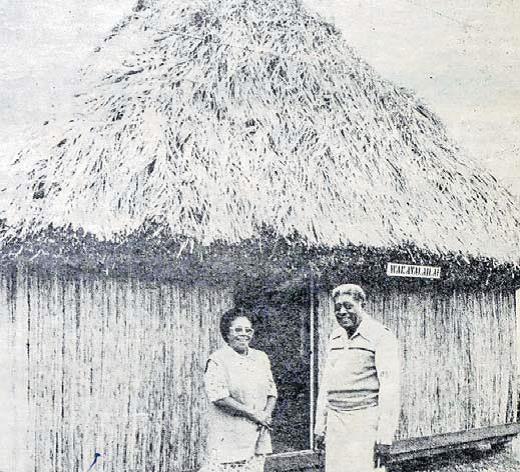The Fiji Times reported on the installation of Ratu Kolinio Rokotuinaceva as Tui Levuka in 1993.
The preparation for the big day was published in The Fiji Times on October 5.
The whole island of Ovalau was preparing for the event because the Tui Levuka is one of Lomaiviti Province’s prominent chiefs.
The report stated rituals dating back about 100 years would be performed on the morning Ratu Kolinio was officially installed at his Levuka Vakaviti Village.
He was to be the second Tui Levuka to be traditionally installed, the Roko Tui Lomaiviti, Petero Rasiosateki said.
The first to be installed was Ratu Samuela Macedru, who was invested close to the time when Fiji was ceded to Great Britain in 1874, the Roko Tui said.
Mr Rasiosateki, who was from Solevu, Bua, was also officiating in the ceremony as he was also the “Bete mai Solevu”.
Ratu Kolinio said he would be dressed in traditional costume at his house known as Vunisinu and would only leave at the invitation of his herald, the Takala ni vanua.
They would then go to a bure called Wakayalailai specially built for the ceremony.
The bure was named after Ratu Samuela’s home, Ratu Kolinio said.
The Tui Levuka’s bete (head priest) would present him the tabua (whales tooth) and iula (a throwing club).
Ratu Kolinio said the tabua signified the handing over to him of the power over the land, people and sea covered under the jurisdiction of the Tui Levuka.
Ten villages between Levuka and Rukuruku come under his jurisdiction.
The iula, he said, signified the submission to his authority of everything within his domain.
Mr Rasiosateki was also expected to perform his part before the veivagunuvi ni yaqona vakaturaga (drinking of the yaqona) ceremonies began.
The heads of the 10 yavusa in the tikina of Levuka were also expected to participate in the ceremony.
Ratu Kolinio said the Methodist Church minister in Levuka would conduct a short service before he would retire at Wakayalailai for four nights with the 10 heads of yavusa.
“It is time where they will discuss with me the virtues and responsibilities I must now shoulder,” he said.
His warriors from Vagadaci Village would then carry him to a pool known as Naivitabua where he would bathe to signify the end of the installation rituals on Ovalau.
“After that the 10 turaga ni yavusa will return to their village where they will cleanse themselves and plant crops which will be harvested when I go to Nukuloa, in Gau, for a ritual bathe at a pool of the same name,” Ratu Kolinio said.
Traditional warriors were already posted in areas declared taboo after the installation.
During the four nights no one under the jurisdiction of the Tui Levuka was allowed to fish or harvest crop.
Among the chiefs present at the ceremony were the Koya na Ratu Mai Verata, the late Ratu Ilisoni Ravoka and Tui Namosi Ratu Suliano Matanitobua.


